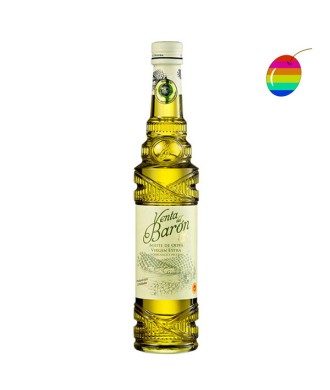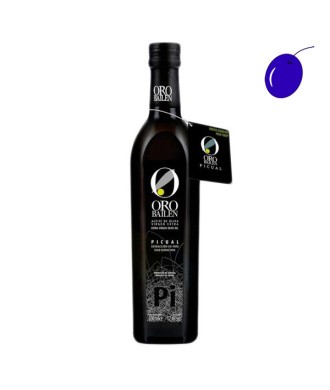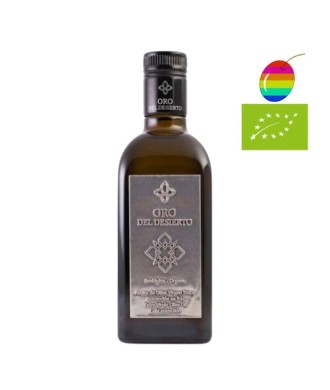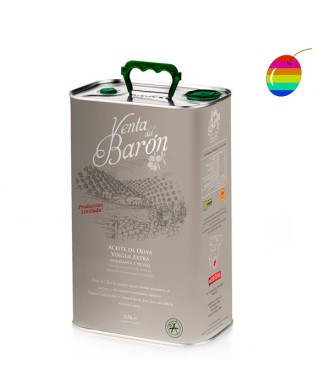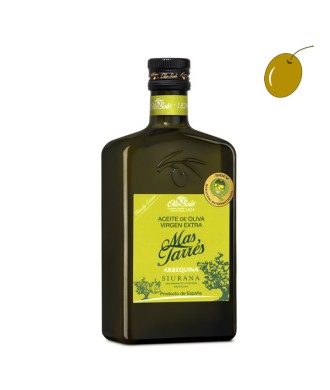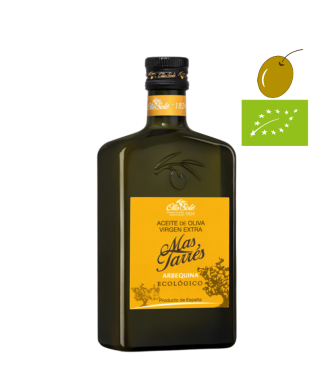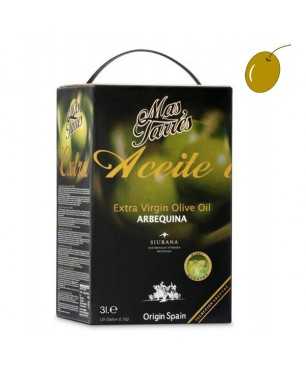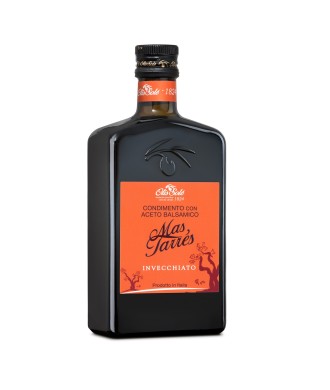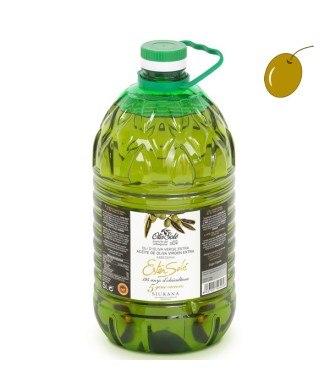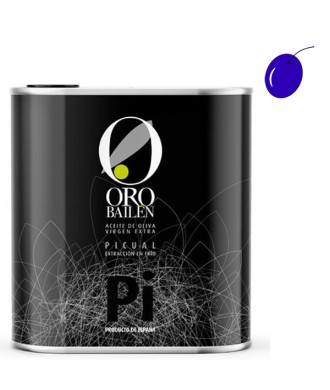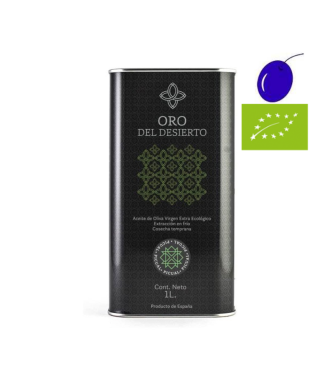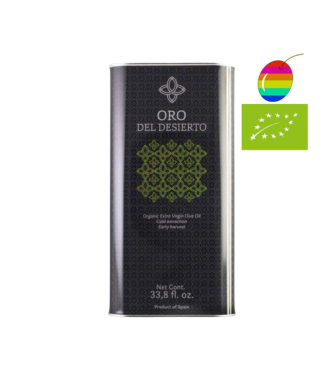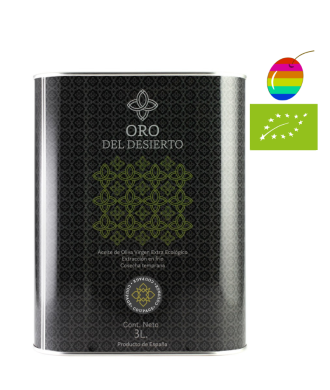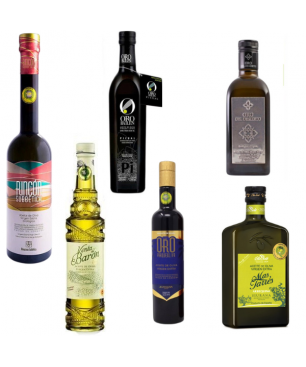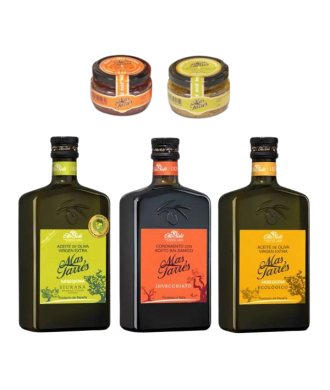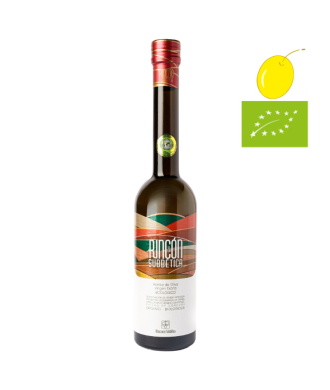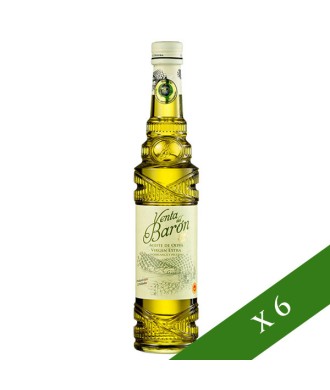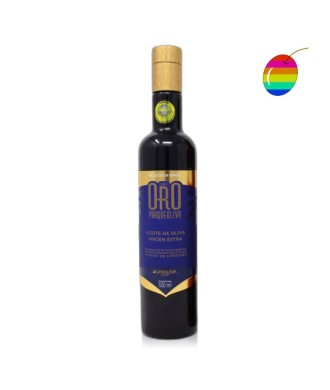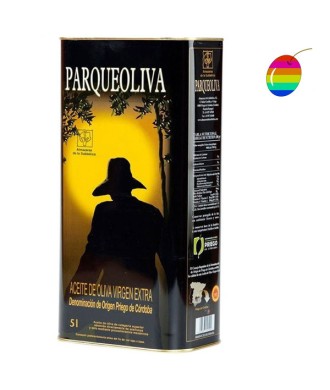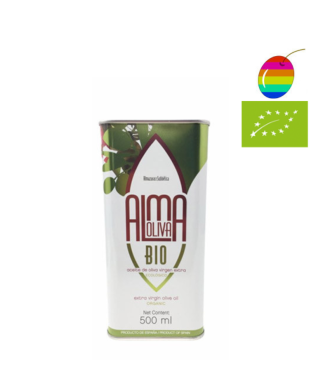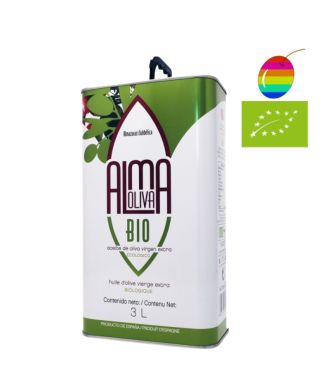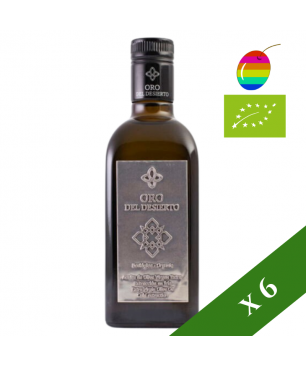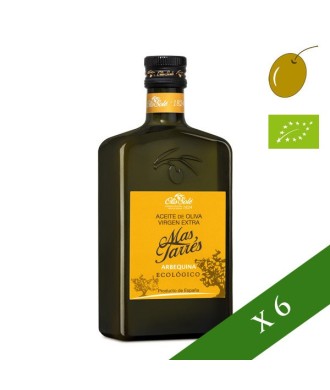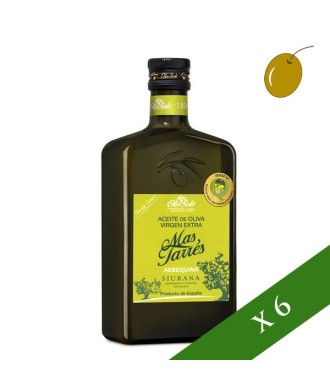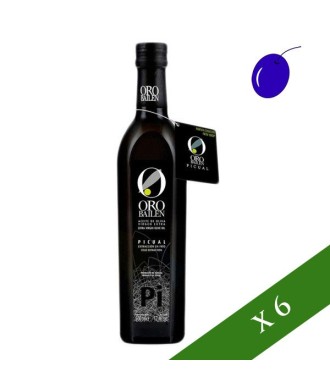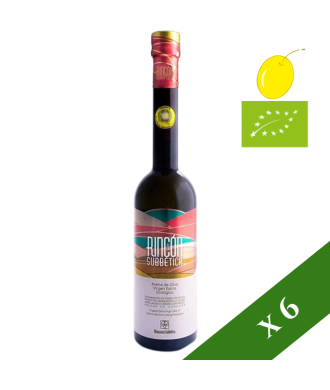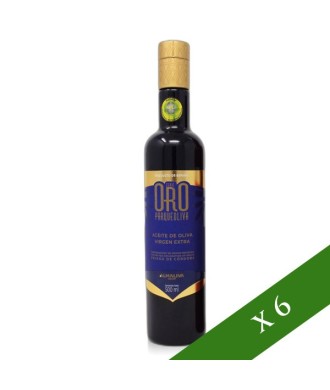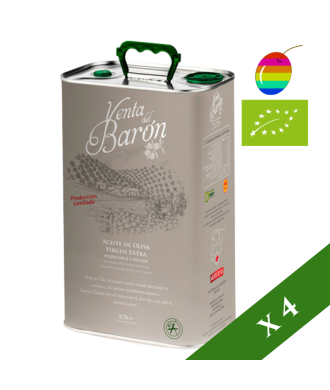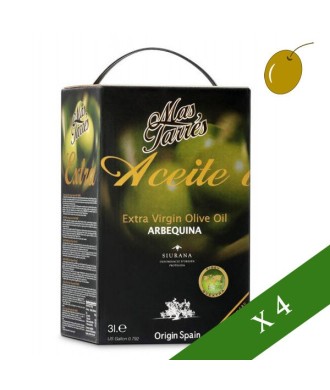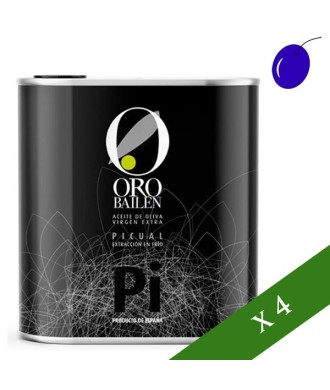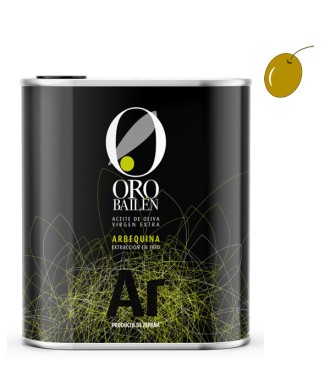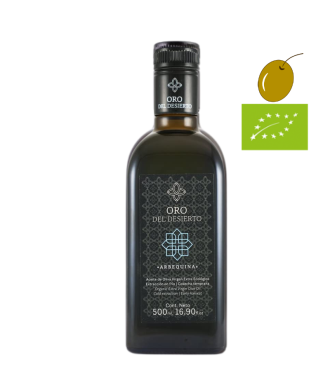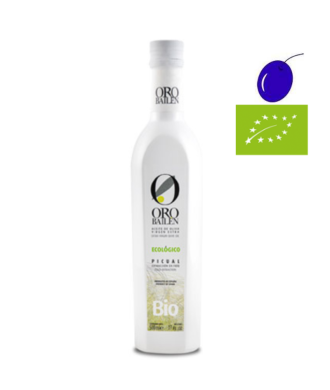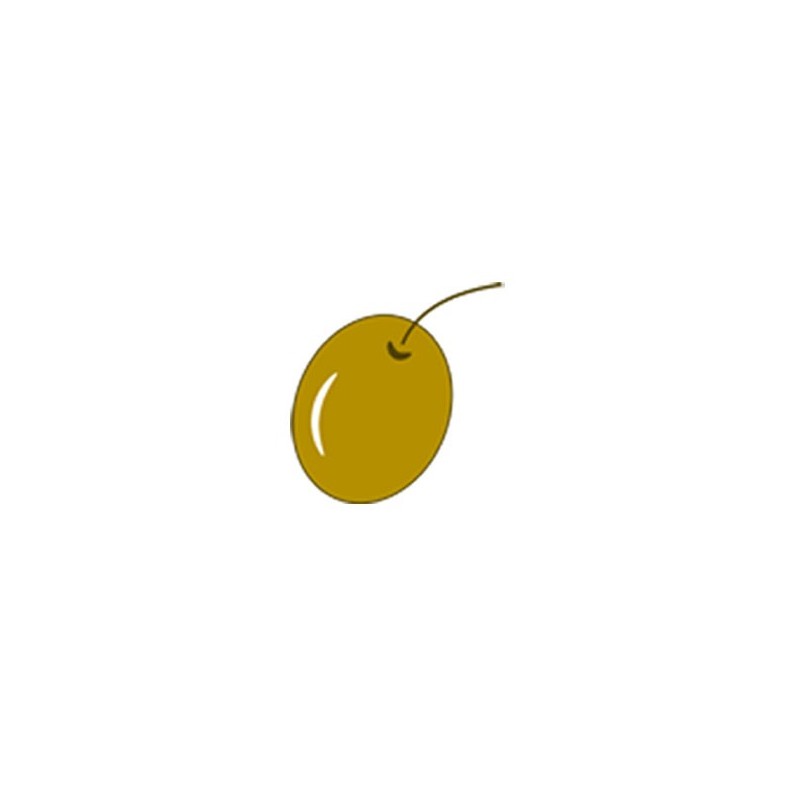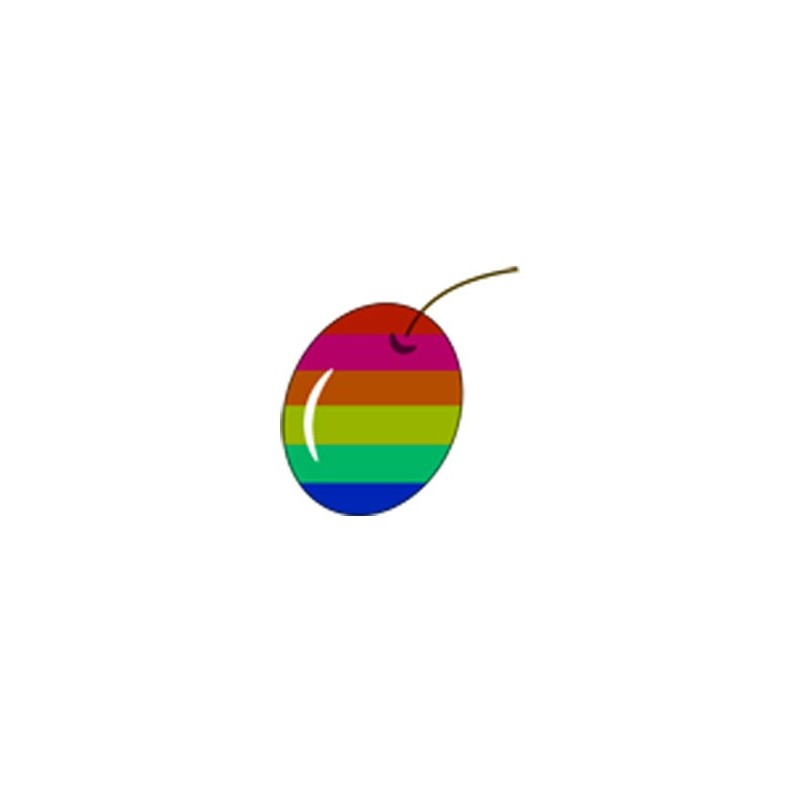The olive oil, the Spanish golden liquid
- Types of olive oil
- How to buy olive oil Extra Virgin online?
- Areas of olive oil production.
- Olive Oil Elaboration Process. The mill.
- History of olive oil. The origin of the green gold.
- How works a Olive Oil tasting?
- How to keep extra virgin olive oil?
- Health and Olive Oil
- Olive Oil Pairings
- Facts about extra virgin olive oil.
Our Olive Oils
1. Types of olive oli (Qualities, Composition and Varieties)
The world of olive oil is board and wide and long, there are over 250 different varieties of olive trees and countless types of olive oil. We have much information about it, but not everyone is aware.
The olive oil industry is a traditional sector which is developing extremely rapidly, this creates more and more, the need to inform consumers about the different types and characteristics of olive oil, its uses in the kitchen, and its origin and development.
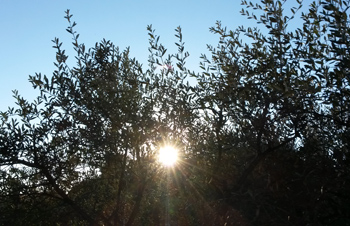
Types of olive oil. Qualities of olive oil
First of all we must understand the importance of the manufacturing process which is a determining factor, not all the olive oil types are the same. We can distinguish at least four types of olive oil by its manufacturing process:
Extra Virgin Olive Oil: This is the olive oil of highest quality, it is obtained from the healthiest fruit at its optimum ripeness. This olive oil has been obtained following a mechanical process in conditions that do not lead to alterations in the olive oil. The Olive oil may be obtained from a single-variety (monovarietal) or from a blend of varieties (coupage).
In order to be considered extra virgin olive oil it must comply a series of guidelines: the acidity (oleic acid) should be at most 0.8g. every 100g.
Virgin Olive Oil: This olive oil has been obtained from successive extractions from olives that have already been pressed. Therefore it does not have the same characteristics to comply the guidelines in order to be considered extra virgin.
Olive Oil: We must pay attention when we buy olive oil with the labelled as “olive oil” because it is the result of the mix of refined olive oil and virgin olive oil. Refined olive oil comes from faulty or damaged olives that are refined to alleviate the defects and subsequently mixed with some virgin olive oil to enhance the flavour. This kind of olive oil is suitable for cooking at high temperatures.
Pomace olive oil: This kind of olive oil is obtained from the mixture of virgin olive oil and pomace olive oil. Pomace olive oil is just oil obtained from the resting olive sprockets and olive pulp. The pomace olive oil is suitable for cooking at high temperatures, frying or for the elaboration of sauces, mayonnaise, and so on…

Varieties of olive oil
Single-variety (Monovarietal) olive oil: The single-variety (monovarietal) olive oil has been obtained exclusively from one single olive variety. The monovarietal olive oil gives a clear taste of the features of every single variety. This allows us to taste the differences between varieties, since every variety has a different set of characteristics and attributes.
Blend (Coupage) olive oil: The Coupage olive oil has been produced from the mixture of different olive varieties. This mixture has become quite an “art” as it can give very interesting results. The fact of mixing different varieties of olive oil changes the features and can sometimes even improve the result, making the olive oil even more attractive to the consumer.
Ecological olive oil: Ecological olive oil is obtained from olive trees that have been grown respecting environment and using only natural resources. This means without using any chemicals like pesticides, mineral fertilizers and so on…
Olive oil from Millenarian trees: The olive oil from millenarian olive trees is a very special olive oil because of its long and beautiful history. This olive oil has been produced from olives from olive trees that have over a thousand years of history (truly living monuments).
In Spain there are over 4500 millenarian olive trees, most of them are from the variety called “Farga”. A olive tree must have a enormous trunk with a total perimeter of 3,5 meters to be considered a millenarian tree.
Olive varieties
We must take into consideration there are many different varieties of olive trees and even more protected designations of origin in Spain. Each variety has a number of special features which characterize the end result (the olive oil).
The different varieties adapt in their own way to the environmental characteristics. Climatic, geographic and agronomic conditions are factors which affect strongly the outcome, providing particular trademark flavours to the different production areas.
Below we will shortly comment the main varieties produced in Spain and their properties and characteristics:
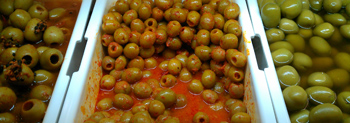
The main varieties of olive trees used in Spain to produce olive oil are:
Arbequina:
This is one of the most popular and produced variety in Spain, it is originary from Arberca, (Lerida) and is mostly used in the regions of Catalonia and Aragon, in recent years it has spread to other production areas around the world.
Arbequina variety is an ideal choice for intensive plantations, thanks to its properties. The resulting fruit is a small-sized olive, with fruity and smooth taste. The olive oil from this variety is characterized by its sweet woody flavour.
Organoleptic Properties: - Oleic Acid: 66.2%; Antioxidants (polyphenols in ppm): 181.7 ppm.
Buy Arbequina
Picual:
The variety Picual is very popular as well, it is originary from Andalucía, and it is regarded as one of the best varieties for its culinary properties. The Picual variety has a strong resistance to extreme weather and rust.
The resulting olive oil from this variety is characterized by its greenish colour and a fruity flavour, this olive oil has a high percentage of oleic acid and natural antioxidants.
Organoleptic Properties: - Oleic Acid: 78.4%; Antioxidants (polyphenols in ppm): 664.3 ppm.
Buying picual
Hojiblanca:
The variety Hojiblanca is originary from the province of Cordoba, Malaga and Sevilla. This variety is highly valued for its resistance to cold, and tolerance to adverse conditions. Note that this variety is one of the varieties with higher productivity, due to its optimal relationship “meat-bone”.
The olive oil obtained from this variety is characterized by its golden colour, with a light body and mild flavours; it is suitable for low fat diets, perfect for salads and white fish.
Organoleptic Properties: - Oleic Acid: 76.1%; Antioxidants (polyphenols in ppm): 187.3 ppm.
Cornicabra (also known as: cornezuelo, ramona, pico de loro, osnal):
Cornicabra variety is mainly produced in the province of Ciudad Real, Toledo, Madrid, Cáceres and Badajoz. These regions of Spain have a long experience producing olive oil from this variety.
The olive oil obtained from this variety has an intense and fruity flavour, with a high content of oleic acid and natural antioxidants.
Organoleptic Properties: - Oleic Acid: 77.1%; Antioxidants (polyphenols in ppm): 464 ppm.
Buying cornicabra
Manzanilla cacereña:
The variety Manzanilla cacereña produces a large fruit very valued for its organoleptic characteristics. The main production area for this variety is in the province of Caceres, Salamanca, Avila and Badajoz, it even reaches some areas of Portugal where it is known as “negrinha or azeitera”.
The olive oil obtained from the variety Manzanilla cacereña is characterized for being slightly bitter and a bit spicy, with a greenish colour and a fruity flavour.
Some of the most prestigious olive oil are made from this variety.
Organoleptic Properties:-Oleic Acid: 70.6%; Antioxidants (polyphenols in ppm): 393.7 ppm.
Buying Manzanilla
Other varieties produced in Spain
Picudo:
The Picudo variety is produced mainly in the Province of Malaga, Granada, Jaen and Cordoba.
This variety is characterized by a large and highly fruitful olive tree with dense branches. The olive oil obtained from the picudo variety has a greenish colour and an intense and fruity flavour.
Organoleptic Properties:-Oleic Acid: 63.87; -Antioxidants (polyphenols in ppm): 259 ppm.
Blanqueta:
The Blanqueta variety is produced mainly in the north of Alicante, it is a valued variety for its resistance to cold, and tolerance to adverse conditions. The olive oil obtained from this variety has an intense and fruity flavour, with a high content of oleic acid and natural antioxidants.
Organoleptic Properties: - Oleic Acid: 56.9%; Antioxidants (polyphenols in ppm): 293.7 ppm.

Empeltre:
This variety is originary from the region of Bajo Aragon and Balearic Islands, the fruit is elongated and with a slightly asymmetric form. The olive oil obtained from this variety is fruity, aromatic and sweet.
Organoleptic Properties: - Oleic Acid: 69.6%; Antioxidants (polyphenols in ppm): 420.7 ppm.
Lechin de Sevilla:
This variety is produced mainly in the provinces of Sevilla, Córdoba, Málaga, Huelva and Cadiz. The olive tree from this variety is big and strong.
Organoleptic Properties: - Oleic Acid: 69.2%; Antioxidants (polyphenols in ppm): 445.3 ppm.
Verdial de Huévar:
The variety Verdial de Huévar is mainly cultivated in the province of Badajoz, Extremadura and in some areas of Portugal. It is considered a highly drought resistant variety which produces a large fruit.
Propiedades organolépticas: - Ácido Oléico: 72,7% .
Farga:
This variety is originary from the north of Castellon, it is also cultivated in the province of Teruel and Tarragona. This olive has a green-gold color with an intens fruity aroma and slightly sweet taste.
Organoleptic Properties: - Oleic Acid: 70.5%.
2. How to buy extra vergine olive oil online?
I will use olive oil for…
The first question we have to ask ourselves when buying olive oil is: for what purpose am I buying olive oil?
Depending on wheter we want to consume it cold or use it for cooking and frying we will buy a specific type of olive oil or another.
Extra virgin olive oil is perfectly suitable for cooking at high temperatures, There are different varieties suitable for cooking and frying, some of them have stronger flavours others have more light flavour, it depends on the variety and the time of collection of the olives.
If we want the olive oil for salad dressings, fish or carpaccio we recommend always using extra virgin olive oil. It is of major importance that the olive oil has been obtained exclusively through mechanical processes of extraction in cold which cause not adulteration of the olive oil.
I like the olive oil with flavour…
There are many different types of olive oil , each olive variety has a number of special features which characterize the resulting olive oil.
For example, the olive oil obtained from the variety Picualhas normally a strong flavour, while the olive oil obtained fron the vareity Arbequina has rather a light flavour.
Please contact us and we will recommend you the most suitable olive oil for the occasion.
The best olive oil is from the area of…
As said before there are many different production areas in Spain we have a long history as olive oil producers therefore we have many protected designations of origin in Spain. Each protected designation of origin has a a number of special features which characterize the end reslut (the olive oil). Therefore it is almost impossible to decide which is the best production area, it depends on the particular tastes of each person.
Types of olive oil package…
There are many ways to package extra virgin olive oil, usually we find glass bottles as package for the table (restaurants and so on…), there are countless different glass bottels for olive oil, it has become quite an “art”. It is important not to expose the olive oil to direct light too long, therefore most of the containers are dark or opaque.
We also find very interesting gift packages with wooden boxes, which are perfectly suitable for presents.
There are excelent olive oils packaged in cans and plastic bottles of different sizes.
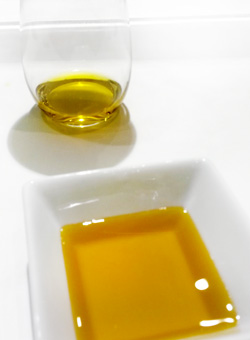

Olive varieties
3. Areas of olive oil production
Olive oil production areas in Spain:
As mentioned above Spain is the leading producer of olive oil world wide. We produce about 35% of the total olive oil production. Our country has a long history as olive oil producer, which has become a tradition in the spanish culture. There are olive trees almost everywhere in Spain, and it has become a very important sector for our agronomic industry.
We can point out the region of Andalucia which produces about 70% of the spanish olive oil. In order to ensure and preserve the quality of spanish olive oil we find 32 different protected designations of origin in Spain.
Below we will shortly comment the main PDO in Spain and their properties and characteristics:
- Olive oil virgin extra with PDO Sierra de Cazorla: In this area the Picual variety is the most cultivated one. This PDO produces top quality extra virgin olive oil with high presence of natural antioxidants and a great stability.
- Olive oil virgin extra with PDO Sierra de Segura: The olive trees grown in this area are mainly from the variety called Verdala, Royal and Manzanilla. This DPO is known for its olive oil virgin extra with high content of oleic acid and rich in vitamins that help to prevent cardiovascular disease.
- Olive oil virgin extra with PDO Sierra Mágina: The olive oil from this PDO comes mainly from the Picual variety, which is by the way the most important variety in the province of Jaen. The olive oil from this PDO is known for having a great stability with a slightly bitter and a bit spicy taste, greenish color and a fruity flavour.
- Olive oil virgin extra with PDO Campo de Calatrava: The olive oil from this PDO is basicaly obtained from the Picual and Cornicabra variety, its production area is located between Toledo and Jaen. These regions have a long experience cultivating olive trees from this variety, and they obtain some of the best olive oli in the world.
- Olive oil virgin extra with PDO Terra Alta: This DPO is located in the region of Tarragona and its main variety is the Empeltre but we can find other varieties aswell like Arbequina, Morruda or Farga.
- Olive oil virgin extra with PDO Sierra de Cádiz: The olive oil from this PDO is mainly obtained from the Variety Lechín, followed by the varieties Verdial, Hojiblanca, Alamena, Manzanilla and Arbequina. The olive oil virgin extra produced in this PDO stands out for having an intense fruity flavour and aroma.
- Olive oil virgin extra with PDO Bajo Aragón: This DPO is located in the northern region of Teruel and Zaragoza, its main varieties are Arbequina and Empeltre. The olive oil with DPO Bajo Aragón is known for its attractive golden color and for having a plesent fruity flavour.
- Olive oil virgin extra with PDO Antequera: The olive oil from this PDO is mainly obtained from the Hojiblanca variety. The DPO Antequera is one of the largest in Spain, it is known for producind a balenced olive oil rich in vitamin E and tocopherols.
- Olive oil virgin extra with PDO Siurana: The olive oil from this PDO is mainly obtained from the Variety Arbequina, followed by the varieties Royal and Morrut. The olive oil virgin extra from this PDO stands out for having a greenish-yellow color and an intens and fruity flavour, with a high content of oleic acid and natural antioxidants. Learn more about our oils Olis Solé D.O. Siurana.
- Olive oil virgin extra with PDO Les Garrigues: This DPO is located in the province of Lleida, and its olive oil virgin extra is known for being slightly bitter and a bit spicy, with a greenish color and a fruity flavour.


Olive oil production areas in Europe
Fact is that 90% of the olive oil production is concentrated in the Mediterranean contries. The production of olive oil is divided between Spain, Italy, Greece, Portugal and France.
Below we will shortly comment the olive oil production history of this countries:
Olive oil production in Spain:
As mentioned above Spain is the leading producer of olive oil world wide. Spain produces about 35% of the total olive oil production. This country has a long history as olive oil producer, which has become a traditional sector in the spanish culture. There are olive trees almost everywhere in Spain, and it has become a very important sector for our agronomic industry.
Olive oil production in Italiy: Italy is the second largest olive oil producer in the world, just after Spain. Nevertheless it must be said that Italy is the leading exporter of bottled olive oil. There are many notable provinces in Italy for its Olive oil production, some of the most important ones are: Apuila, Calabria, Sicily and Tuscany.
Olive oil production in Greece:
Greece can be considered the third largest olive oil producer, this country has also a long history as olive oil producers. Some of the most remarcable production areas in Greece are the region of Peloponnese and Crete also known as “The Island of Olives”.
The main varieties grown in Greece are called “Koroneiki” and “Adramitini”.
Olive oil production in Portugal:
Portugal is the fourth largest olive oil producer in Europe, despite not being a Mediterranean country, there are sereveral regions suitable for olive threes production in this country. Portugals production is increasing progressively thanks to the modernisation of its production facilities.
Olive oil production in France:
France is the fifth largest producer in Europe, and the seventh in the world. The production of this country is concentrated in the region of Midi and the main varieties produced are called Picholine, Bouteillan and Tranche.

Olive oil Production areas in the World
Olive oil production in Tunisia:
Olive oil production is one of the most important sectors in Tunisian agricultura, this country has large plantations of olive trees.The main varieties grown in Tunisia are called Chemlai, Chetoui and Sfax and its olive oil is known for beeing fruity, smooth and rich in polyphenols, which gives this olive oil a buitter point.
Olive oil production in Turkey:
Turkey is the sixth largest olive oil producer, the main production is located in costal areas. This country has being doing a lot of improvement in its olive oil production which in recent years led to a considerable increase in production.
Olive oil production in Morocco:
Morocco is also a olive oil producer, this county spends almost half of its workforce in the agricultural and has developed various strategies to medernize its olive oil sector. The main varieties grown in Morocco are called Moroccan Picholine, Meslala, Haouzia and Manzanilla.
Olive oil production in The United States:
The United States is mainly a olive oil importer, but it has also its own olive oil production. The olive oil importations exceed notable the olive oil production, nevertheless its production is growing constantly. The most remarcable production area in the United States is California, the main varieties are called Ascolana, Mission, Manzanilla, Arbequina and Sevillana.
Olive oil production in Australia:
Australia is another olive oil producer, this country is trying to develope a strong an dynamic olive oil industy betting on the qualiti of their oils. The main viarieties grown in this country are Arbequina, Barnea, Coratina, Hojiblanca, Kalamata, Picual and Manzanilla.
Olive oil production in Argentina:
Argentina ranks thenth as olive oil producer world wide, and its production is growing constantly thanks to new technology. The main growing areas in Argentina are Catamarca, Mendoza, San Juan, Córdoba, La Rioja and Buenos Aires, the predominan varieties in these regions are Manzanilla, Empeltre, Picual and Arbequina.
Olive oil production in China:
China was the last country to join the olive oil producing countries. Even tough it is de las country China has already 40 years experience in the olive tree production. It is well known that the Asian giant imports about 99% of the olive oil consumed in its country, this explains the big effort China is doing in becoming a olive oil producer.
The main production areas are Shaanxi, Sichuan and Gansu. In these areas the most important olive tree varieties are called Daphonella and Mastoidis.

4. Olive Oil Elaboration Process. The mill.
The mill is where the olives are squeezed in order to start the olive oil Elaboration process, the word mill comes from the Arabic and means "Place where things are squeezed."
There are several techniques for squeezing olives, the most common one is the olive mill but we identify several extraction processes.
Nowadays most traditional techniques have been replaced by aromatic mechanisms which simplify the elaboration process.
As said there are several techniques to produce olive oil, but generally all follow the following steps:
Harvesting:
The assemblage involves the collection of olives from the olive trees, there are several collection techniques. The main goal is to collect as much olives as possible without damaging the olive trees and its branches.
The Handmade collection is the most traditional and antique assembling technique, it is also a very soft technique for the olive trees because wit this technique we avoid most damage for the olive tree, the only problem is the high cost involved with the Handmade collection, for this reason every day less people use this technique.
Another traditional collection process is the so called “Vareo”, this technique uses a long stick to hit the branches and make the olives fall to the ground. This technique is a little bit more harmful for the olive trees since the branches suffer from the impacts, the problem with this technique is the breakage of that some branches and shoots that would have given some olives next season. This technique is used less and less due to its high costs and the breakage problems.
Nowadays the most used technique is the “Shaking”, this technique uses a harvesting machine. This machine uses vibration to make the olives fall to the ground, the dropping olives are recollected with nets. This system is the most common one nowadays because it reduces both, the costs of harvesting and the damage to the tree.
Reception:
Once the harvesting is done, the next step is to recive the harvested olives and make a first quality control.
The healthy olives are used exclusively to produce Extra Virgin Olive Oil, the defective olives cannot be used to produce this kind of olive oil.
With the damaged olives are used to produce normal olive oil or Pomace olive oil.
Cleaning:
Once we receive the Olives that made it through the quality control we must clean them to remove waste such as dust, mud, stems etc...
Air Fans and Pressurized water are the most common technique used for the cleaning.
Milling:
This step is basically where the olives are crushed in order to separate the fleshy part from the pinions, subsequently the olive oil is obtained.
The olive oil is extracted from the Mass obtained from the milling which is called “pasta” in Spanish.
This process should be performed in less than 48 hours to prevent the premature fermentation of the olives.
Usually all the grinding mills where exclusively made with stone mills, the most traditional millstones where driven by beasts.
Nowadays all these methods have been replaced by automatic grinding systems which increase the process profitability.
The Extraction process
The next step is to extract the Olive oil from the mass obtained from the milling “pasta”, there are different methods to achieve this goal. The main objective is to extract the clean Olive oil and to remove the remaining parts such as bone, skin, pinions and so on…
As said before there are several techniques for olive oil extraction, but for Extra Virgin Olive Oli the extraction process must work without adding any chemicals or heat to the extraction process.
Pressure extraction: This technique is the most traditional one and also the oldest method used to extract olive oil. This Technique involves some filter Baskets that hold de (liquid) olive oil and retain the solid parts such as skin and sprockets and other possible substances from the the Mass (“pasta”).
Extraction by centrifugation: Nowadays this is the most widely used technique in the olive oil industry, this technique uses a centrifuge machine that filters fluids and separates other substances from the Mass (“pasta”). This process proceeds without adding chemicals or heat in order to preserve all the properties from the Olive oil.
In Both extraction processes we obtain a resulting mass from the process, this mass still has some oil in it, this mass will restart all the process and in order to obtain more refined olive oil.


5. History of olive oil. The origin of the green gold.
History of the Olive Tree.
The Olive Tree is a unique and ancient Tree, it is a symbol of peace and live in many cultures. This tree and its fruit have been highly valued throughout many years because it’s unique gastronomic and therapeutic qualities.
The olive tree has long and oblong dark green leaves which are evergreen, it can become an ancient tree and can acquire exceptional measures that can exceed 10 meters high and a diameter of 8 meters.
This Tree and its fruit has been used for various objectives, from nourishment to cosmetics and even for treating various diseases.
Origins of olive oil.
The Greek civilization where the first producers of olive oil, it is suspected that its origin took place in some Levantine region of the Mediterranean. The first olives used to produce olive oil where harvested from wild olive trees which already grew in this part of the Mediterranean.
From there it expanded through trade all over Europe and nowadays it is consumed almost all over the globe.
Olive oil in ancient Greece and Rome
The Olive tree has been always present in the Greek culture, the existence of olive oil dates from the the eighth century B.C., Homer the famous Greek poet had poems where he referred to olive oil as precious “liquid gold”. Olive oil always had a major role in Greek culture, many documents show us how important olive oil was to the Greek civilization.
The Greek culture traded with this precious liquid expanding it first all over the Mediterranean where other cultures started with their own olive oil production and from there it expanded all over the world.
With the Roman Empire olive oil trade spread significantly, thus increasing the prominence of The Iberian Peninsula with Andalusia as one of the most important producer of olive oil. Finally the whole region of Guadalquivir valley became the main supplier of olive oil worldwide.
6.How works a Olive Oil tasting?
In order to make a serious and correct olive oil tasting it is very advisable to follow a set of guidelines / techniques. First of all we must look for optimal conditions to make an effective olive oil tasting, therefore we will need to sharpen all our senses.
There are several studies revealing that the optimal hours for our senses eradicate in the morning hours, therefore it is advisable to proceed with the tasting during these hours. Moreover there are some other aspects and considerations to take into account before starting with the tasting:
-it is very advisable to stop smoking at least 30 minutes before starting the Tasting.
-Stop eating at least one hour before the tasting
-Avoid using any type of cosmetic, perfume, soap or anything that could distort the tasting.
-To find ourselves in a perfect physiological and psychological conditions.
-Proceed with the tasting in a isolated place, avoiding any kind of external odor or noise.
To start the tasting we fill small recipients with approximately 15ml of olive oil, then we must set the temperature around 28ºC in order to optimize the tasting, we can achieve this just by holding the recipient with the olive oil in our hands.
Once we reach the desired temperature its the moment to start the tasting, first we will smell the olive oil in order to get a first impression.
The next step is to take a small gulp of olive oil and taste its flavours and features.
Between tasting and tasting it is advisable to make small breaks in order to recover our senses.
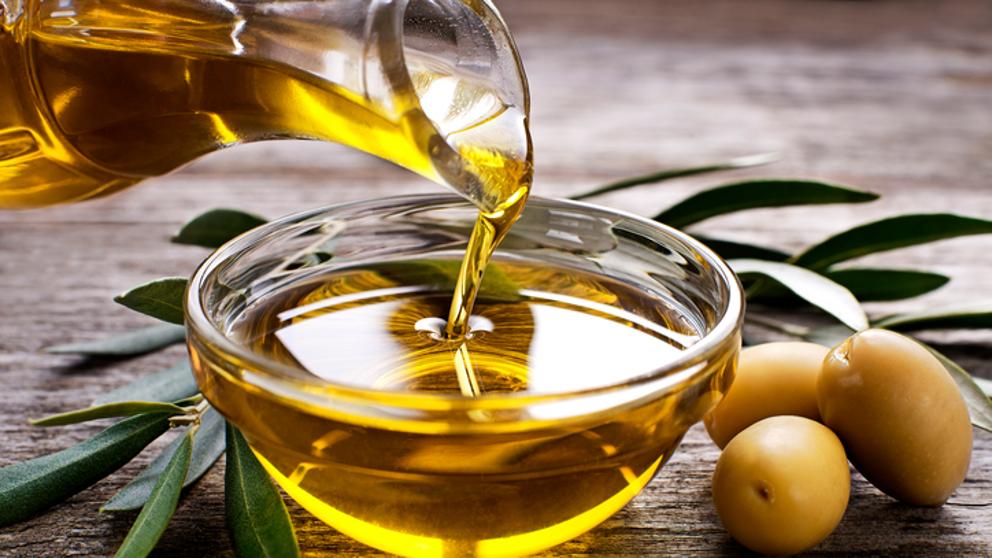
7. How to keep extra virgin olive oil?
We identify basically three problematic situations when keeping extra virgin olive oil:
-Direct light Exposure: Ultra violet rays damage the properties of extra virgin olive oil, we must avoid direct exposure to direct sun light for a long period of time. For this reason most olive oil bottles are are dark or opaque in order to preserve all the olive oil features.
-Contact with Oxygen: Too much contact with oxygen can damage the olive oil, since it can rust and loose its features. Therefore we must avoid leaving the Extra virgin olive oil bottle open .
-Excessive heat: Heat can damage olive oil as well, for this reason it is advisable to store the bottles in a cool and dark place for optimal preservation.
Learn more about conservation and consumption of our olive oils
8.Health and Olive Oil
Extra virgin olive oil is extremely healthy for several reasons, this beneficial properties appear only in extra virgin olive oil since it’s the only one that has been obtained following a mechanical process in conditions that do not lead to alterations in the olive oil properties.
Therefore we must know that only Extra virgin olive oil contains healthy features which are so famous in the Mediterranean culture.
Extra virgin olive oil is one of the gastronomic secrets of the Mediterranean diet, this diet is considered by many food professionals as the healthiest in the world.
Professionals from the medical sector and researchers claim that a regular consumption of extra virgin olive oil can be beneficial for:
-Cholesterol problems: A regular consumption of extra virgin olive oli favours the regulation of cholesterol problems. Extra virgin olive oil contain unsaturated fatty acids, and its regular consumption helps to regulate cholesterol levels preventing thus cardiovascular diseases.
-Prevention of Diabetes: It has been shown that a regular consumption of extra virgin olive oil can lower the blood glucose and triglyceride in the blood, reducing thus the risk of suffering Diabetes.
-Hipertensión problems: It has been shown that a regular consumption of extra virgin olive oil helps to deal with Hypertension issues due to the high presence of poly phenols and oleic acid.
-Digestive function: A regular consumption of Extra Virgin olive oil helps the digestive function acting as a stimulant and reducing intestinal transit constipations by helping the body to make a good digestion. Olive oil fats are wonderfully tolerated by our organism, reducing gastric acidity and protecting us from ulcers.
-Bone growth and strength: It has been shown that a regular consumption of extra virgin olive oil contributes to a better absorption of micro nutrients such as Vitamin A and D, promoting bone growth and preventing diseases such as osteoporosis.
-Reduces the risk of arthritis and some cancers: A balanced and regular consumption of extra virgin olive oil helps to reduce the risk of suffering arthritis and some cancers due to the high presence of natural antioxidants.
-Brain Development: It has been shown that a regular consumption of extra virgin olive oil favors the creation of cell membranes due to the high presence of poly phenols. Therefore it contributes to a better preservation of memory.
-Natural Antioxidant: Olive oli contains a lot of Vitamin E, acting thus as natural antioxidant for the human body.
-Natural Moisturizer: A regular consumption of olive oil contributes to a better conservation of the human body. In the past a lot of cultures used olive oil as cosmetic because of it special properties it is a natural moisturizer, there are a multitude of creams, lotions and soaps based on olive oil.
9.Olive Oil Pairings
There are multiple ways to use olive oil, extra virgin olive oil offers a wide variety of gastronomic opportunities. It can be perfectly combined with many aliments as condiment in sauces, roasts and stir-fries.
There are many ways to use olive oil, some of there uses are preferable to others because they enhance the properties and nuances of the extra virgin olive oil.
How to use extra virgin olive oil in the kitchen?
As mentioned before there are many ways to use extra virgin olive oil:
Crude olive oil: The olive oil is used directly for dressing salads, vegetables, carpaccio and sandwiches, in Spain and in most Mediterranean countries this is the most common way to use the precious “liquid gold”. This way of using extra virgin olive oil enhances its properties and nuances since it is the most direct and simple way of consuming it.
Olive oil for Cooking and frying: Olive oil is also used for cooking and frying, it is very common in Spain and in most of the Mediterranean countries to use Olive oil for cooking, this usage has spread almost all over the world.
Extra virgin olive oil is one of the most stable vegetable fats when subjected to high temperatures, therefore it is ideal for frying or cooking, furthermore it improves the gastronomic qualities of the food providing aroma and taste.
It is also much healthier than other vegetable oils.
The optimal temperature for frying is between 160-200 degrees, at this temperature we conserve all the properties and aroma from the olive oil, forming a golden crispy coating around the food allowing better preservation of its nutrients.

Features of each variety of extra virgin olive oil
There are many varieties of olives to produce extra virgin olive oil and each variety has its features, furthermore each region has set of climatic conditions which can affect the characteristics of the olive oil.
Below we will discuss the main features of the most common olive oil varieties:
Extra virgin olive oil Arbequina variety: The Arbequina variety is known for being a variety that produces soft olive oil with sweet and delicate texture. We recommend using this kind of extra virgin olive oil for salad and vegetable dressing and for fish dishes, it provides a unique flavour but without covering the other flavours.
Extra virgin olive oil Cornicabra variety: The Cornicabra variety is known for its great fruity flavour, with green leaves, almonds and tomato nuances. This intense fruity flavour makes it ideal for salads / vegetable dressings as for sandwiches and toasts.
Extra virgin olive oil Picual variety: The Picual variety is known for producing the richest in oleic acid and natural antioxidants olive oil. The olive oil obtained from the Picual variety has a strong personality, with spicy and slightly bitter flavours, with wood, almonds and banana nuances.
Particularities of olive oil
Olive oil does not mix with water due to its different polarity, it simply floats on whater because its density is lower than the water density.
It is a misbelief that olive oil with lower acidity index are softer than olive oils with higher acidity index, it has nothing to do with the flavour of the olive oil.
It is another misbelief that fried olive oil fattens more than crude olive oil, it fattens the same regardless the state in which it appears.
It is true that crude olive oil is healthier because it keeps better the oil properties, while frying olive oil with temperatures over 170 degrees may damage the olive oil and it might loose some of its nutrients.
10. Facts about extra virgin olive oil.
Is the colour of the olive oil a sign of quality?
We won’t look at the colour of the olive oil to ensure quality, this is definitely not a good idea since there are many olive varieties, and the colour of the olive oil varies depending on the variety/ varieties used and the degree of maturity of the fruit.
If we seek to ensure a certain quality, the best thing to do is to read carefully the labels from the olive oil bottle and try to answer the following questions:
-Is this really 100% Extra Virgin Olive Oil?
-Are the olive oil bottles dark or opaque in order to preserve all the olive oil properties?
-Do the bottles have direct sunlight exposure?
-Does the bottle have best before date?

What is the olive oil acidity index?
The olive oil acidity index is a technique used to classify the different kinds of olive oil depending on its acidity expressed in grams per 100g of olive oil.
As mentioned before the acidity of a certain olive oil has nothing to do at all with the strength or the flavour of the olive oil.
The acidity index is a technique used to observe the naturally occurring acidity of the olive oil, generally the presence of acid in the olive oil is due to the maturation of the olive oil. Therefore we can say that a low acidity index is indicative of the freshness of the olive oil and therefore synonymous of quality.
In order to consider certain olive oil as virgin extra it must comply a acidity index of less than 0,8 gr. for every 100g.
Olive oil do not mix with other fluids like water?
Olive oil does not mix with water or Vinegar due to its different polarity, it simply floats on water because its density is lower than the water density. Two fluids will only mix if their atoms and molecules have similar electric charge.
 4,8/5
4,8/5 




 4,8/5
4,8/5